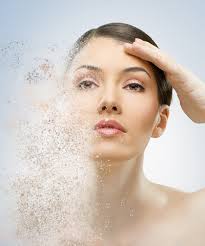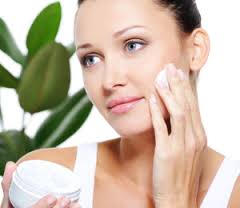 Skin bleaching items — also known as lightening creams, whiteners, skin brighteners, or perhaps lose color — work by decreasing a pigment called melanin within the skin color. Many people who use lighteners achieve this to help remedy skin color difficulties including freckles, age spots, scarring, or tinting in connection with human hormones. It is usually a strategy familiar with lighten up naturally black skin color.
Skin bleaching items — also known as lightening creams, whiteners, skin brighteners, or perhaps lose color — work by decreasing a pigment called melanin within the skin color. Many people who use lighteners achieve this to help remedy skin color difficulties including freckles, age spots, scarring, or tinting in connection with human hormones. It is usually a strategy familiar with lighten up naturally black skin color.
Skin color lightening items purchased with a few risks. As with all awesome, be sure to read the content label and also understand the specifics before you buy and apply a skin tone lightener.
What exactly Decides Epidermis?
Skin color depends upon the volume of melanin in the skin tone. Melanin is a color produced by customized cells called melanocytes. People with darker skin color have an overabundance melanin.

The amount melanin your epidermis has is principally a matter of your genes. Sun light direct exposure, human hormones, damage, and contact particular chemical compounds also affects melanin generation.
Modifications in epidermis will usually resolve them selves. For instance, bronzes lose color if your number of being exposed in order to sunlight is lowered. Nevertheless after a while, specific discolorations, for example “age” spots or “liver” spots, are more or fewer long term.
What Exactly Is Skin color Whitening?
Dermis lightening is a makeup treatment to lessen the prominence regarding skin discolorations as well as the colour of skin. You can buy lightening treatments which are non-prescription and by health professional prescribed.
Some individuals apply skin color lightener for their overall body to switch their particular skin tone, however can be be extremely high-risk. The ingredient in certain skin lighteners is mercury, therefore whitening may result in mercury poisoning.
Mercury is a dangerous realtor that can induce really serious psychiatric, neurological, and kidney troubles. Pregnant women using a skin lightener with mercury can complete the mercury on their child.
The use of mercury as an element in skin lighteners is suspended in the U.S. Nonetheless, some skin color lighteners produced beyond your U.S. can still consist of mercury.
How Do Skin Lighteners Perform?
Skin lighteners consist of a lively compound or a combined things that decreases the amount of melanin during the skin wherever it is utilized.
How Do Skin Lighteners Perform?
The most trusted component in skin lighteners purchased in the U.S. is hydroquinone.
The Federal drug administration handles the usage of hydroquinone in the U.S. Over-the-counter skin lighteners can contain nearly 2% hydroquinone. Dermatologists can easily write prescription medications pertaining to lighteners that contain 4%-6% hydroquinone.
It is critical to talk with your physician before employing a products with hydroquinone and to continue with the medical doctor’s recommendations accurately.
Other skin color lighteners apply drugs including steroids and retinoic acid, that will come through vitamin A, as active components. And many skin lighteners have 100 % natural ingredients for example kojic acid — a compound which will come from a fungus — and arbutin, a combination seen in various plants.
 One of the most substantial perils associated with utilizing some skin lighteners will be the probable exposure to mercury. One research found out that nearly 1 out of every 4 skin lighteners made in Asia and sold away from U.S. contained mercury.
One of the most substantial perils associated with utilizing some skin lighteners will be the probable exposure to mercury. One research found out that nearly 1 out of every 4 skin lighteners made in Asia and sold away from U.S. contained mercury.
There are other prospective chances of skin lighteners. People dangers can include these:
Extended use can contribute to premature getting older of skin.
Long-term utilize may increase the chance of cancer of the skin coming from exposure to the sun. Always use sun block when using a skin lightener and going out in sunlight.
Products and steroids in certain skin lighteners might increase danger for skin ailment, skin getting thinner, pimple, and weak injury healing.
Applying steroids to substantial areas of skin color might placed you in danger of health issues linked to steroid becoming consumed by the body.
Hydroquinone could cause unnecessary and untreatable skin tones (ochronosis).
Various whitening agents, like natural ingredients, could potentially cause skin irritation or hypersensitive reaction.
Specific Measures When You Use a Skin Lightener
Speak with your physician before employing a skin lightener and request for distinct guidance for your item.
Be sure there isn’t any mercury within the product or service. Mercury may also be shown underneath different names, like calomel, mercuric, mercurous, or mercurio.
Create sure an over-the-counter skin lightener with hydroquinone has no a lot more than 2% of that substance.
When a tag lists hydroquinone although doesn’t claim how much it has, don’t presume it’s safe. Some foreign merchandise include a lot more hydroquinone as compared to is actually permitted in the U.S. and several labeling is probably not accurate.
Should you have questions of a product you are considering, engage with your physician or pharmacologist to make sure it’s harmless. Your dermatological surgeon could also suggest other treatment methods, like peels, microdermabrasion, and laser light treatments.
Solution For Skin Pigmentations, Freckles, Age Spots, Acne, Dark Underarms, Melasma! YES Give Me NOW : http://doctorcare.skinwhite.hop.clickbank.net?tid=skinwhitefor